Show Customer Account & Name
January 31, 2023 - by Bill Jelen

Problem: My source data comes from the sales reps. They don’t use consistent names, so I end up with multiple customer names for one account number.

This forces me to put both Acct and Customer in the row area. This looks horrible. The customer name doesn’t appear on the totals for each account.
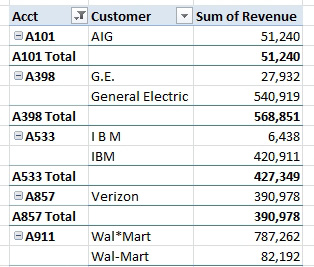
Strategy: This common problem would be solved if the Excel team would allow you to add Customer Name to the pivot table with a calculation of “First” or “Last”. Look; we don’t really care if we get G.E. or General Electric…either one is a million times better than an empty cell on the total row.
But, for now, we don’t have First or Last. Your best bet is likely to be creating a pivot table with Acct and Revenue. Copy the entire pivot table. Paste as Values.
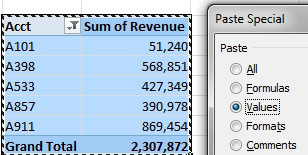
You are now allowed to insert a blank column between Acct and Revenue. Use a VLOOKUP back into the original data set to fill in the customer name.
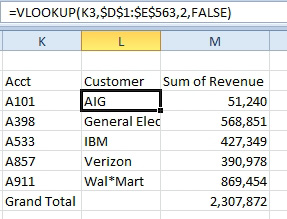
Alternate Strategy: You can do the FIRST yourself back in the original data set. Add a column called Acct - Customer. Use a formula to concatenate the Acct with a VLOOKUP to return the first customer from the list.
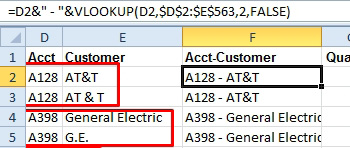
When you build the pivot table, put this field in the row labels.
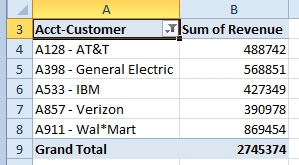
This article is an excerpt from Power Excel With MrExcel
Title photo by Skye Studios on Unsplash
